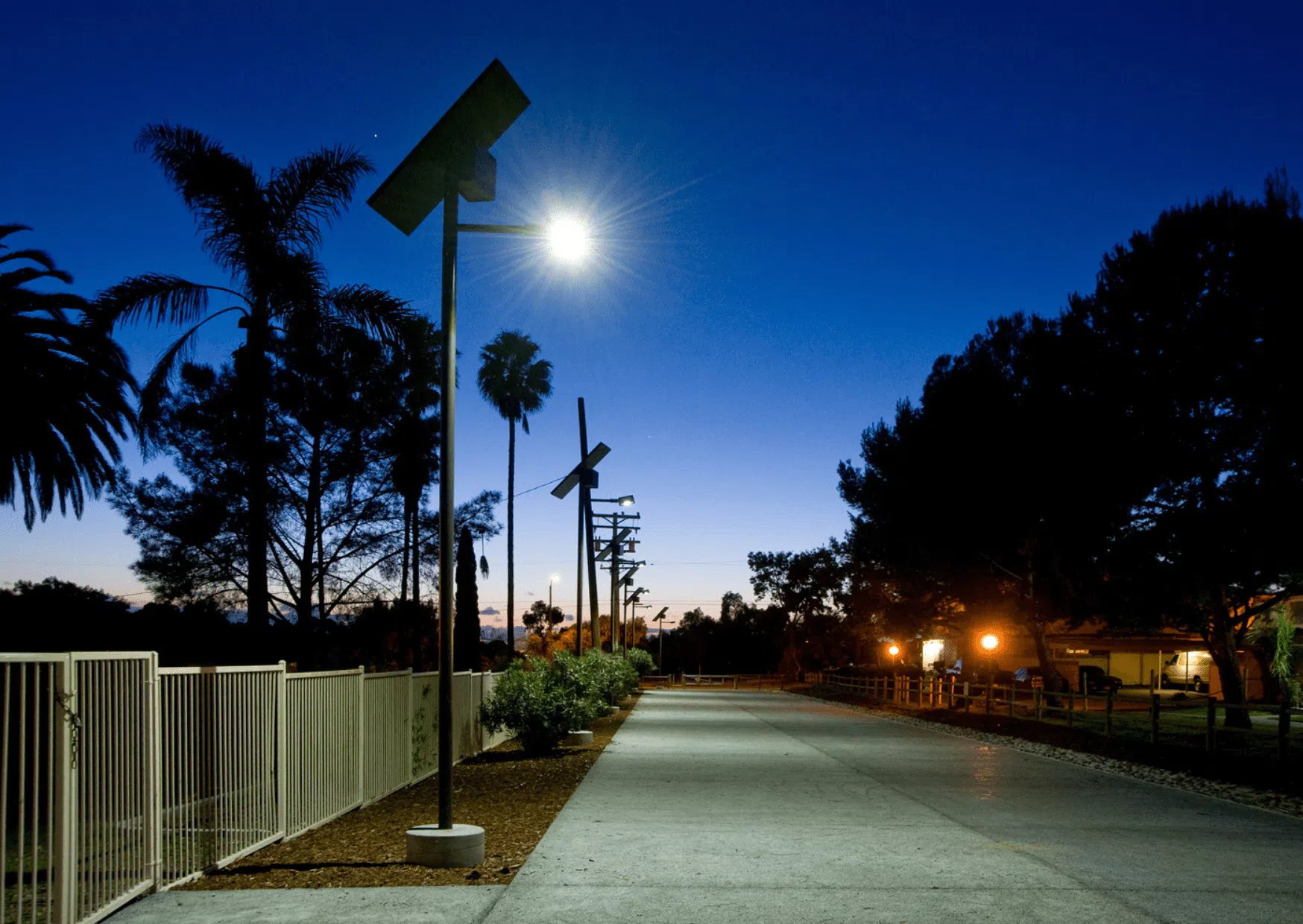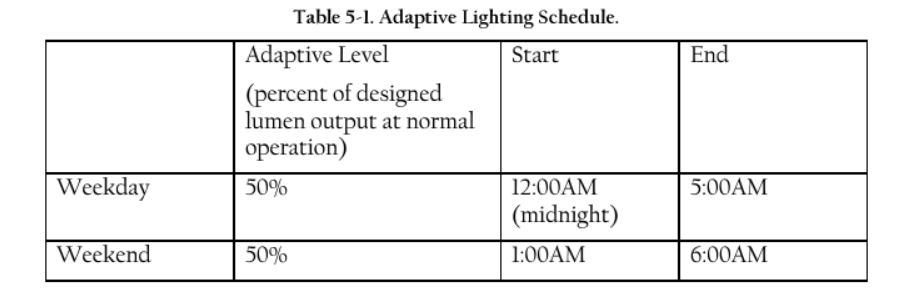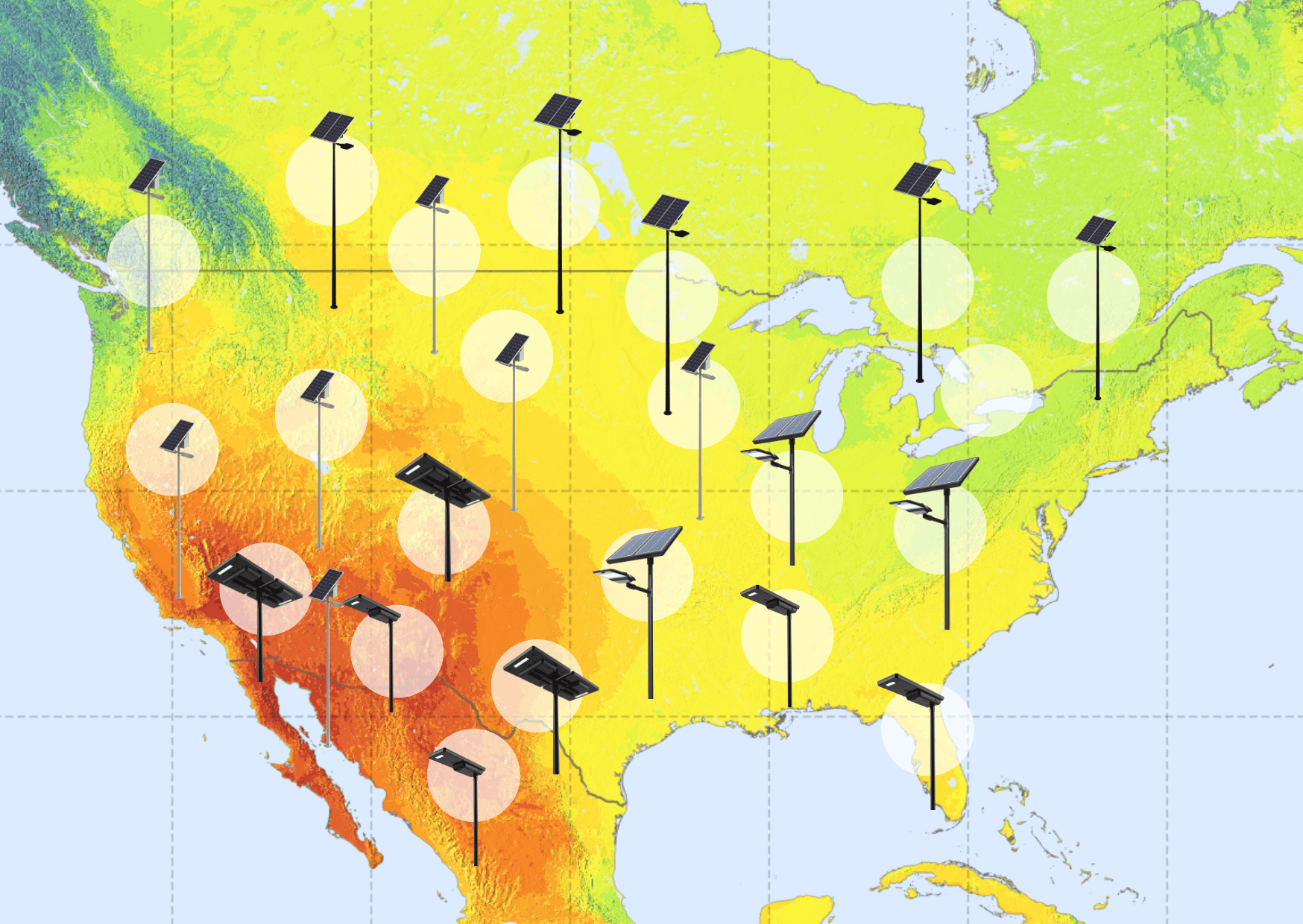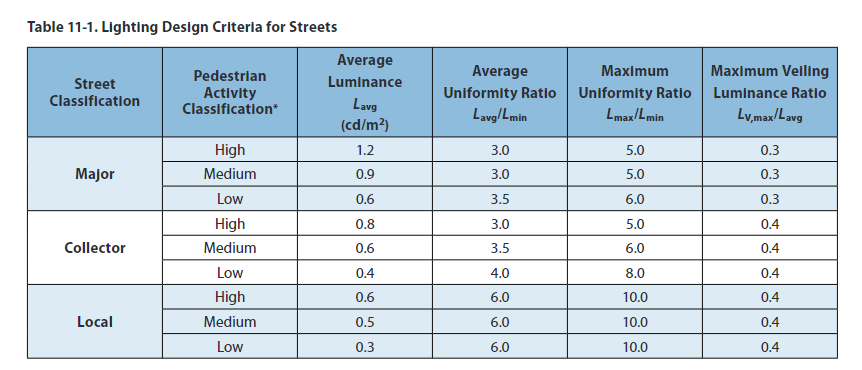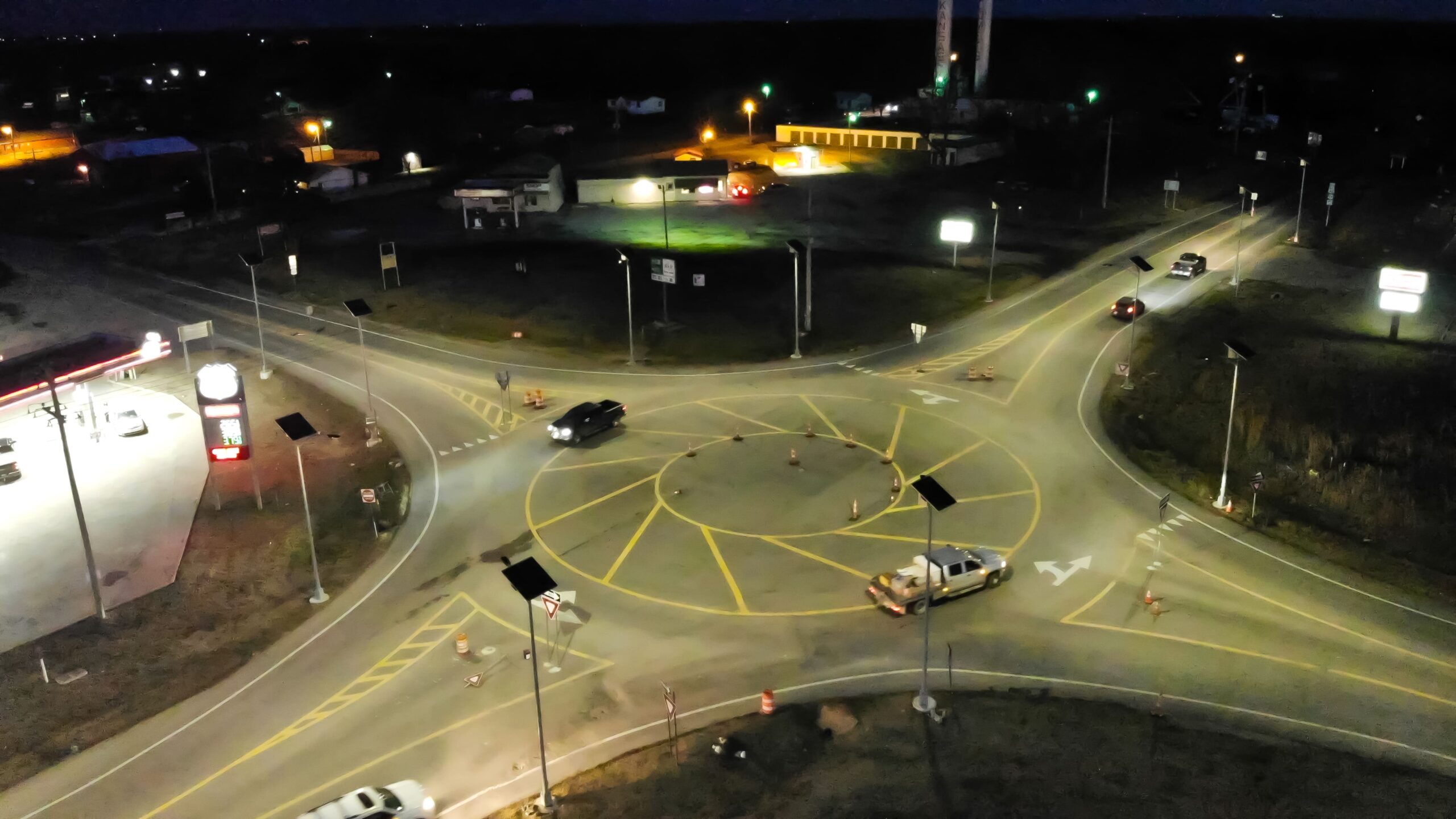Â
Â
Outdoor lighting has long been recognized for its safety benefits. On roads, it helps prevent accidents. In neighborhoods, it deters criminal activity. In parks and public spaces, it encourages people to gather after dark, making these areas safer and more welcoming.
Â
It's widely accepted that proper lighting enhances safety, and few would argue against increasing it. However, the concept of adaptive lighting challenges this notion by suggesting we reduce light levels during times when it's not needed. As the Federal Highway Administration (FHWA) states, "use lighting only when required and at the appropriate level to ensure safety."
Â
This might seem counterintuitive, especially for high-risk areas like roadways. But adaptive lighting is not a new idea—it’s supported by updated guidelines from the Illuminating Engineering Society (ANSI/IES-RP-8-22), which provide a strong foundation for its implementation and highlight the many advantages it offers.
Â
What is Adaptive Lighting?
Adaptive lighting isn’t static. Unlike traditional systems that turn on and off at fixed times or based on ambient light, it uses smart controls to adjust brightness in real time based on environmental changes—like traffic flow, weather, or pedestrian movement.
For example, residential streets often see peak pedestrian activity early in the evening, then gradually decline. With adaptive lighting, lights can be dimmed when activity decreases, saving energy without compromising safety.
Â
Example from the City of San Jose’s Streetlight Design Guide, one of the first cities to adopt adaptive lighting policies.
Â
Why Go Adaptive?
For agencies using traditional AC-powered lighting, the benefits are clear: reduced energy use, lower costs, and less strain on the grid. But even for solar lighting companies, there are compelling reasons to embrace adaptive lighting.
Lowering system load means smaller, more cost-effective solar panels and batteries. This makes solar solutions viable in remote or low-light areas, such as northern regions with limited sunlight. We always do the math to ensure our systems are properly sized and reliable.
Â
Adaptive lighting extends the reach of solar solutions to high-latitude areas with less sunlight.
Finally, there are environmental benefits too. Dimming lights reduces light pollution, which can disrupt natural light patterns for both humans and wildlife. Adaptive lighting aligns with the IES’ Five Principles for Responsible Outdoor Lighting, promoting low-level, controlled, and useful illumination.
Â
Where and How to Implement Adaptive Lighting
The latest IES guidelines (RP-8-22) offer detailed recommendations on where and how to implement adaptive lighting in the U.S. Similar guidelines exist in Canada and the UK.
Road classification and pedestrian activity determine lighting needs. For example, local roads with moderate pedestrian traffic may benefit from dimming during off-peak hours. Cities like San Jose have already adopted these practices, improving efficiency while maintaining safety.
Â
High pedestrian volume means higher lighting requirements, while lower volumes allow for dimming.
Â
Where Not to Use Adaptive Lighting
While adaptive lighting is ideal for many applications, it’s not suitable for all. The RP-8-22 warns against using it in high-risk areas such as signalized intersections, midblock crosswalks, roundabouts, freeways, and railway crossings.
These locations require consistent lighting to ensure visibility and safety. In such cases, solar-powered solutions like EverGen lights provide reliable, full-time illumination.
Â
Adaptive lighting is not recommended for roundabouts or other complex environments. Solar lighting offers a reliable alternative for dusk-to-dawn operation.
Â
Alternatives to Adaptive Lighting
In situations where adaptive lighting isn't feasible, motion detection is a great alternative. Sensors can detect movement and adjust lighting accordingly, offering similar energy savings without sacrificing safety.
Motion sensors are particularly useful in parking lots, industrial zones, and campus walkways. They also help increase visibility in alleyways, allowing neighbors to notice activity when lights turn on.
Â
Are You Ready to Make the Switch?
With updated IES guidelines and growing support from cities like San Jose, adaptive lighting is becoming a standard practice. Federal programs like Safe Streets and Roads for All now recognize it as an eligible investment.
We’re excited about the potential of adaptive lighting, especially for solar solutions. It allows us to deliver compact, efficient systems to more customers and locations than ever before.
Whether you're looking to reduce energy use, improve safety, or expand your lighting options, we’re here to help. Contact us today to learn more about how adaptive lighting could work for your project.
Â
Metal Bracket,Bracket Inspection Fixture,Aluminum Checking Jig,Retainer Inspection Fixture
JING SUNG Precision CO., , https://www.jingsungcnc.com
